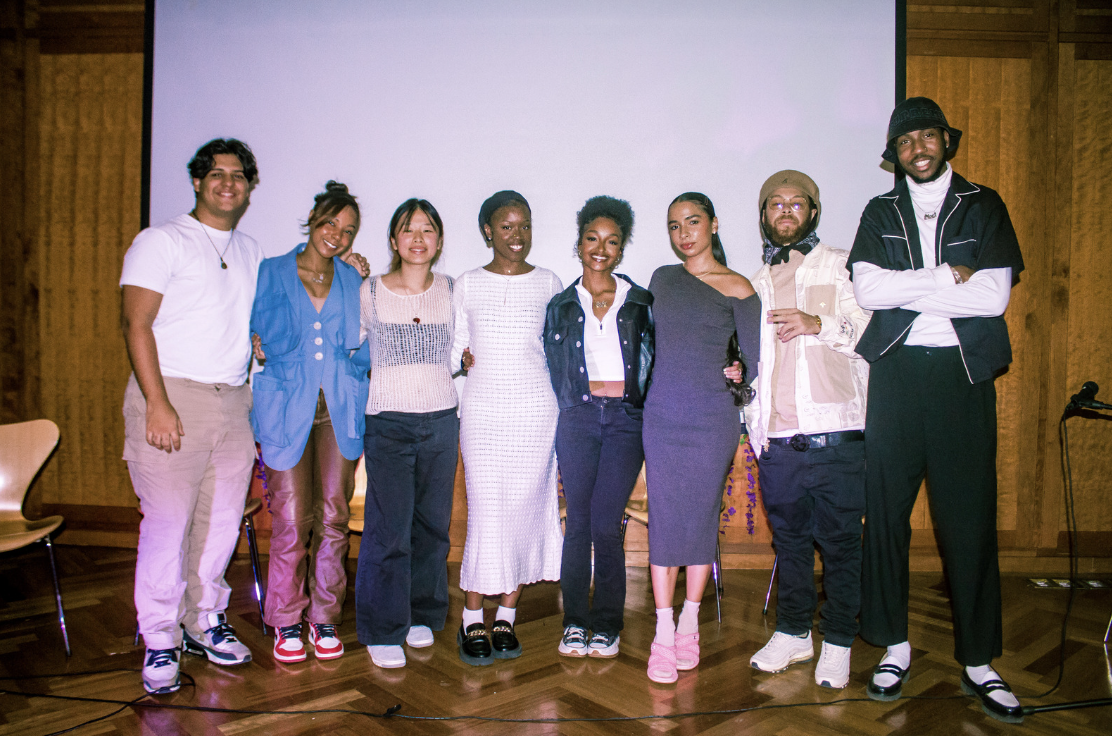AI’s positive impact on the fashion industry is multifaceted and far-reaching. It enhances design processes by rapidly analyzing extensive data, enabling designers to create collections that precisely cater to customer preferences and emerging trends. This heightened efficiency also extends to personalized shopping experiences, where AI-driven recommendation engines offer customers tailored product suggestions based on their preferences. Additionally, AI’s virtual try-on technologies enable shoppers to virtually test clothing items, removing the necessity for physical fitting rooms and aligning seamlessly with online shopping.
Artificial intelligence (AI) has the potential to create designs and provide creatives with invaluable support by creating original styles, but it has its drawbacks. AI’s impact on the fashion industry is a double-edged sword for those deeply passionate and its creative aspects. AI threatens the conventional values of the fashion industry while also bringing efficiency and creativity. AI’s automation of design and manufacturing processes threatens the handmade, handcrafted quality of the fashion process. The uniqueness and self-expression that designers bring to their work may be obsolete by the influence of AI-driven trend analyses and design tools. Furthermore, an abundance of copycat designs could result from AI’s ability to imitate popular fashion trends. This could lessen the uniqueness and creativity that are necessary for the fashion industry. The industry’s sustainability and ethical standards may be jeopardized by AI-optimized production procedures promoting fast fashion that makes for unethical labor practices to make clothing. Essentially, industry enthusiasts for fashion face the difficulty of striking a balance between the benefits of AI-driven innovation and the preservation of the aesthetic and emotional elements that contribute to fashion’s status as a profoundly personal and cultural form of expression.
Thorough testing and regulation are necessary to address any potential biases and discrimination in AI systems and make sure that algorithms do not support preconceptions or discriminate against people with darker skin tones. In order to ensure that the needs and viewpoints of black and minority communities are taken into account when developing AI-powered artistic tools, efforts should also be made to promote diversity and representation within AI development. Through regulatory measures, diversity programs, fair access, and cultural awareness, the arts may fully utilize AI while maintaining the principles of inclusivity and dignity for all people. To address these challenges and ensure that AI serves as a force for inclusivity and cultural preservation, it is imperative to implement a comprehensive set of policies and regulations:
1. AI-Generated Plagiarism Act
For minority communities, strengthening anti-plagiarism procedures for AI-generated material is crucial since it is a potent instrument for preserving their cultural expressions, promoting diversity, and elevating marginalized voices. Traditional art forms, languages, folklore, and other cultural heritage are protected from unlawful duplication or copying by AI by maintaining the originality of minority cultural productions. Additionally, by enabling artists to profit monetarily from their creative creations, they support minority populations’ economic development. Furthermore, through promoting greater public understanding and appreciation of minority populations’ cultural history, these legislative protections send a strong message of respect for the artistic contributions made by these communities. In the end, stronger anti-plagiarism laws serve as a deterrent against cultural appropriation, challenging prejudices and promoting positive narratives while eventually creating an environment conducive to the success of up-and-coming talent from minority backgrounds. In the end, these actions help to develop a more just and equitable creative environment where minority views are valued and honored.
2. Data Privacy and Consent Act
The intersections of data privacy, informed consent, and minority communities highlight how crucial it is to protect these communities’ rights, identities, and cultural diversity. It is predicated on a strong dedication to cultural sensitivity and respect, realizing the close ties between personal and cultural information and the complex fabric of minority cultures. In this situation, informed consent serves as a safeguard against dehumanizing generalizations and exploitative practices, guaranteeing that AI-generated content accurately captures the complexity and diversity of these communities. In addition, it provides a means of empowering people by giving them authority over how their data influences how they are portrayed in AI-generated works. Creating an environment where data privacy and informed consent not only meet legal requirements but also uphold the values of respect, equity, and cultural celebration, promoting inclusivity and authentic representation in the creative industries, by involving community leaders and advocates, fostering ethical AI development, and establishing strong legal protections.
3. AI Transparency and Disclosure Act
Building trust, respect, and empowerment among minority communities requires transparency and disclosure in AI-generated material. Transparency would make minority communities more equipped to make educated decisions about the content they interact with, which fosters digital literacy and improves their ability to successfully traverse the digital environment. It is also an effective instrument for reducing bias, promoting moral AI research— which helps create a more just and inclusive digital environment that values the diversity and viewpoints of marginalized people. In the end, disclosure and transparency are moral requirements that promote a digital environment in which all views are acknowledged, valued, and accurately reflected.
4. AI Ethics and Accountability Commission
The creation of a regulatory agency to monitor AI applications in creative industries has significant effects on minority communities’ representation and well-being. By establishing and upholding standards that forbid damaging stereotypes and biases, these organizations act as defenders of moral content production. They ensure that AI respects and appreciates the diverse expressions of minority cultures, which is vital in maintaining their cultural legacy. By supporting varied representation, enabling minority artists, and resolving inequalities in access to AI resources, regulatory oversight fosters diversity. In addition, these organizations are essential tools for settling disputes and worries about AI-generated material that can harm minority voices, promoting an equitable and welcoming creative community. Regulatory organizations would actively support the preservation of minority rights, cultural sensitivity, and equity within the ever-changing field of AI-enhanced creativity through advocacy, education, and international cooperation.
5. AI Preservation Act
This act would embody the dedication for respect, inclusivity, and historical significance by bridging the preservation of human-created art with the cultural legacy and representation of minority populations. This act protects the cultural integrity and authenticity of fashion by providing protection for fashion designs from minority populations and guaranteeing that they are not altered by AI. It would prevent the misuse or distortion of minority fashion designers’ creative expressions and, in addition to empowering them by safeguarding their fashion legacy. It also cultivates an atmosphere of cultural awareness and respect. These standards are beneficial to museums, galleries, and educational institutions because they encourage inclusivity and truthful portrayals of minority cultures in their collections and displays. The AI Preservation Act, emphasizes the significance of nurturing cultural awareness, protecting the rich tapestry of minority fashion, and adding to a fashion landscape that honors diversity and legacy.
Artificial intelligence presents both benefits and challenges for the creative arts, particularly fashion, where it has great potential. AI’s potential must be balanced with the preservation of creative integrity. Minority populations are affected by AI, which makes extensive regulations for inclusivity, cultural preservation, and ethical standards necessary. By taking these steps, we can make sure AI supports diversity and inclusivity while promoting the peaceful cohabitation of technology and creativity, resulting in a more equal creative environment.
Author: Usman Khalid, Editor: Yelissa Lopez




